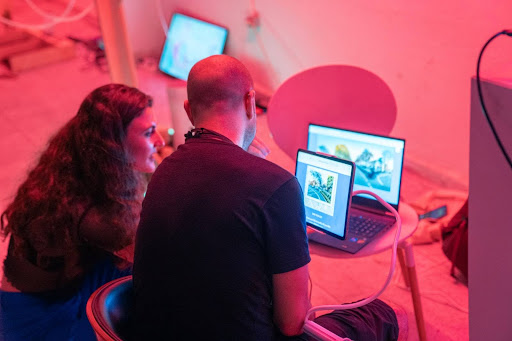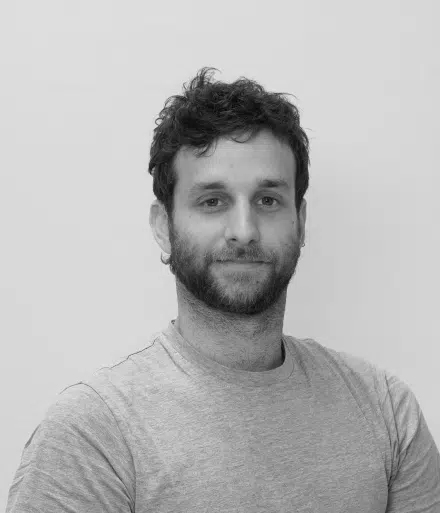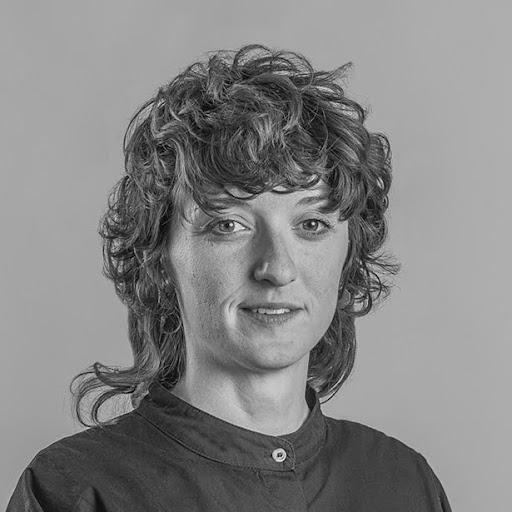Syllabus⇝
The Thesis Project course is designed to support and guide students through the process of developing their final design projects during the second year of the Master in Design for Emergent Futures. Throughout the academic year, students will engage in three key phases: Implementation, Validation, and Dissemination—each building on the prior to ensure that the project is well-researched, contextually grounded, and capable of being scaled for real-world impact. The course emphasizes interdisciplinary research, design methodologies, field engagement, and the creation of sustainable business models.
By the end of the course, students will have created a fully developed, scalable, and contextually situated project that reflects their ability to address complex societal challenges with innovative, emergent design solutions.
Schedule⇝
In the first term, students will focus on conducting research and establishing the scientific background of their projects. They will delve into relevant theories, methodologies, and frameworks to inform their design process. Students will gain a solid understanding of the context and theoretical foundations of their projects.
Learning Objectives
- Develop advanced research skills to investigate and establish the scientific background of design projects, specifically focusing on the integration of emerging technologies and their impact on societal, cultural, and environmental contexts in order to develop their projects and practices as Alternative Presents to current challenges.
- Apply theoretical frameworks and methodologies to inform the design process and address complex challenges in emergent futures, with a particular emphasis on the ethical and sustainable integration of emerging technologies, situating their practices from a first-person perspective critically assessing scalable socio-technical systems.
- Gain an understanding of the social, cultural, environmental, political, and economical aspects that influence design implementation within specific communities and contexts, considering the potential implications and effects of emerging technologies on these factors.
Milestones
- Research Proposal: A document outlining the theoretical framework, research questions, and methodologies that will guide their project.
- Annotated Bibliography: A detailed analysis of at least 10 academic and field-relevant resources related to their topic.
- My Community of Practice: Motivation, Commitment and Context: A reflective report detailing the motivations, commitment, and engagement with the student’s contextualised and territorialised community of practice. It should address situated qualities and criteria to developing their community, including what is shared and not shared with them, and the potential contributions to be made
Evaluation Methods
- Framework assessment: Evaluate proposals based on clarity, depth of research, and alignment with course objectives.
- Design Dialogues I: Demonstrate comprehension and application of research to inform the design process in the format of Design Dialogues.
During the second term, students will shift their focus to situating their projects within a specific community and context. They will explore the social, cultural, environmental, political, and economical aspects that influence the development and implementation of their designs. Students will gain insights into the needs, aspirations, and challenges of the community they aim to serve.
Learning Objectives
- Build a solid foundation for engagement by critically analyzing the feasibility and relevance of planned interventions and subsequent analyses within a specific context.
- Promote design interventions encompassing field research and participatory methods to gain insights into the needs, aspirations, and challenges in the context exploring how these can be leveraged to create positive social impact.
Milestones
- Field Research Report: An account of the interventions and methods performed to engage a community of practice. Documented insights gained from the interventions and community engagement activities.
- Prototype Testing and Feedback Analysis: A report on the feedback and iterations of a prototype (or prototypes) tested with the community of practice.
- Thesis Index and Structure: Taking into account the “Research Methods” course, develop your own index and structure for your Research Thesis.
Evaluation Methods
- Feedback sessions: Assessment based on the depth of community involvement, effectiveness, and diversity.
- Design Dialogues II: Showcase design validation and iteration processes, evaluated on alignment with contextual challenges and needs.
In the final term, students will work on the scalability model of their projects. They will explore strategies for scaling up their designs to reach a wider audience and have a greater impact. Additionally, students will develop sustainability and viability strategies for their projects. They will consider factors such as funding, partnerships, and distribution to create a comprehensive plan for implementing their designs.
Learning Objectives
- Enable students to create actionable plans for scaling their projects, considering contextual, technical, and community factors to develop a scalable implementation strategy.
- Guide students in designing a sustainable model integrating funding strategies, partnerships, and distribution mechanisms into their projects, ensuring long-term viability and resilience of their solutions.
Milestones
- Sustainability Plan: A comprehensive plan detailing the steps required to ensure the long-term viability of the project, including technical iterations, resource allocation, and community engagement, integrating an academic, communitarian, or economic framework (or a hybrid model).
- Ways of Drifting: A written document identifying and analyzing the development of the projects until the dissemination phase. It will report on how external critiques, challenges, unforeseen adaptations by new audiences, emergence of new opportunities, etcetera have impacted on the development of their journey in MDEF02. Ways of Drifting can be used as a framework to reflect on the student’s evolution.
- Audiovisual material:
- A 90 second case video reflecting your journey from MDEF01 initial research and (focusing on) the developments of your projects throughout MDEF02 with the following structure:
- Challenge / Issue / Research Question
- State of the art
- What have I done (design interventions
- How did I do it (community of practice and reflections from the Design Interventions)
- Results / Findings (and next steps)
- A 30-60” teaser/trailer video of your project, giving a general overview and directing the viewer to go deeper into the project: website, event… It can open questions to the viewers, take and interview format, display data for the challenges we are facing, a call to action…
- A 90 second case video reflecting your journey from MDEF01 initial research and (focusing on) the developments of your projects throughout MDEF02 with the following structure:
- Thesis Project
Evaluation Methods
- Feedback sessions: Sustainability strategies presented in the form of Design Crits to peers, faculties, mentors and the community of practice.
- MDEFest: Presentation in the form of an event to external actors (from academia, industry, and/or community stakeholders) demonstrating the project’s potential, sustainability, and the ability to present Alternative Presents.
Faculty⇝
Saúl Baeza is DOES and MAYBE Creative Director, VISIONS BY Founder and Editor-in-chief and VIBE content director. While lecturing at Elisava Barcelona University of Design and Engineering he also researches functional and digital identities as part of the “Making with..." Research Group (TU Eindhoven Research) and "Futures Now" Research Group (Elisava Research). Saúl is the co-director of the Master in Design For Emergent Futures (MDEF), organised by the Institute for Advanced Architecture of Catalonia (IAAC) and Elisava Barcelona School of Design and Engineering, in collaboration with the Fab Academy. Saúl has been visiting professor and lecturer at international universities, educational institutions and cultural venues such as Harvard GSD, Central Saint Martins and London College of Communication (UAL), Institute for advanced Architecture of Catalonia (IAAC), RMIT University Melbourne, Rhode Island School of Design, Pascual Bravo University in Medellín, Sónar+D, Victoria&Albert Museum, CCCB and DHUB, among others.
Architect, researcher and professor. PhD in Aesthetics and Theory of Arts. Her area of work is based on the critical transaction between politics, space and affect, with a special interest in the possibilities of direct action. In her professional career, she carries out projects that address heterogeneous architectural and artistic formats between temporary interventions in public space and socio-spatial practices of collaboration and mapping. She has been visiting professor and guest lecturer at universities worldwide and she has published both specialized articles and book chapters, mainly addressing counterdisciplinary strategies through direct action, cartographies, embodied exploration and performative criticality.


